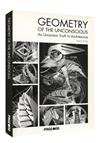| FindBook |
|
有 1 項符合
jyanzi kong的圖書 |
 |
$ 336 | GEOMETRY OF THE UNCONSCIOUS
作者:Jyanzi Kong 出版社:Page One Publishing 出版日期:2011-07-01 語言:原文書  看圖書介紹 看圖書介紹
|
|
|
圖書介紹 - 資料來源:TAAZE 讀冊生活 評分:
圖書名稱:GEOMETRY OF THE UNCONSCIOUS
在建築中,有形與無形的差距在空間與物質的關係中是固有的。本書探討的是這樣的建築,其機遇,氣氛和環境的複雜性被融入到潜意識的幾何形狀中。由此,新建築不全可以基於現代公認的準則而實現,也可以基於文化背景和淵源而實現。這樣的幾何形狀是一個端點,包含着感知、觀念和行動的連續性。
|











